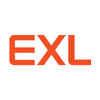
i
2COMS
Filter interviews by
2COMS Accountant Interview Questions and Answers
2COMS Accountant Interview Experiences
1 interview found

Accounts in any transaction of company
(4 Questions)
- Q1. Accounts in p&l account
- Ans.
Accounts in P&L account refer to the various income and expenses recorded in the profit and loss statement.
Accounts in P&L account include revenue, cost of goods sold, operating expenses, interest expenses, and taxes.
Revenue accounts represent income generated from sales of goods or services.
Cost of goods sold accounts represent the direct costs associated with producing goods sold by the company.
Operating expenses acc...
- Q2. Accounts in balance sheet
- Ans.
Accounts in balance sheet are financial records that show a company's assets, liabilities, and equity at a specific point in time.
Accounts in balance sheet are categorized into assets, liabilities, and equity.
Assets include cash, inventory, and property.
Liabilities include loans, accounts payable, and accrued expenses.
Equity represents the owner's stake in the company.
The balance sheet must always balance, with assets
- Q3. Liabilities & Asset about solution to me
- Ans. Current assets me particular time of assets means cl example stock, sundry debtors, fixed assets furniture,
- Q4. Accounts in business transactions
- Ans.
Accounts in business transactions refer to the recording and tracking of financial activities within an organization.
Accounts are used to keep track of income, expenses, assets, and liabilities.
They help in monitoring the financial health of a business and making informed decisions.
Examples of accounts include cash, accounts receivable, inventory, and accounts payable.
Interview Preparation Tips
Accountant Jobs at 2COMS
Interview questions from similar companies

I applied via Walk-in and was interviewed in Jul 2019. There were 3 interview rounds.
Interview Questionnaire
2 Questions
- Q1. Basic Accounting concepts
- Q2. Depreciation and provisions
Interview Preparation Tips

I appeared for an interview in Jul 2017.
Interview Questionnaire
4 Questions
- Q1. Introduce yourself
- Ans.
I am a detail-oriented accountant with 5 years of experience in financial analysis and reporting.
5 years of experience in financial analysis and reporting
Detail-oriented and organized
Proficient in accounting software such as QuickBooks
Strong analytical skills
Bachelor's degree in Accounting from XYZ University
- Q2. Why do you want to join this company?
- Ans.
I am impressed by the company's reputation for innovation and growth, and I believe my skills and experience align well with the opportunities here.
Company's reputation for innovation and growth
Alignment of skills and experience with opportunities
Excited about potential for career development and advancement
- Q3. Why do you want to switch job?
- Ans.
I am seeking new challenges and opportunities for growth in my career.
Looking for new challenges and opportunities for growth
Interested in expanding my skill set
Seeking a more supportive work environment
Want to work for a company with better work-life balance
- Q4. How much salary?
Interview Preparation Tips
Experience: resume shorlisted.
Tips: Make your resume good
Round: HR Interview
Experience: First of all the HR started taken interview and ask to introduce yourself
and then ask various questions
Tips: Good Communication skills

I applied via Job Portal and was interviewed before Dec 2019. There were 3 interview rounds.
Interview Questionnaire
1 Question
- Q1. Basic of accouting
Interview Preparation Tips

I applied via Walk-in and was interviewed in Nov 2021. There was 1 interview round.
Interview Questionnaire
11 Questions
- Q1. Tell me about yourself.
- Q2. How did you Hear About this position.
- Q3. Why do you want to work at this company.
- Q4. Why do you want this job.
- Q5. Why should we hire you.
- Q6. What can you bring to the company.
- Q7. What are your greatest strengths.
- Q8. What do you consider to be your weaknesses.
- Q9. Tell me about a challenge or conflict you’ve faced at work. and how you dealt with it.
- Q10. Tell me about a time you demonstrated leadership skills.
- Q11. What is your greatest professional achievement
Interview Preparation Tips
2. Dress for the job or company.
3. Listen.
4. Don’t talk too much.
5. Don’t be too familiar.

I applied via Walk-in and was interviewed before May 2021. There were 2 interview rounds.

(2 Questions)
- Q1. Introduction and about your family background
- Q2. What is your day to day activities your job responsibilities
Interview Preparation Tips

Interview Questionnaire
4 Questions
- Q1. Tell about your self... Where are from...
- Q2. How to help the your education these company?
- Q3. What is your target?
- Q4. Job work hours?
Interview Preparation Tips

Interview Questionnaire
3 Questions
- Q1. Guys always clear your basic concept of accounting while giving any account or finance interview this is the core rule
- Q2. Liability, asset, profit, loss, these concept should be clear
- Q3. Depreciation, accrual, balance sheet, journal entry, financial & cost accounting
Interview Preparation Tips
By_Aditi Jain
E-mail_ *****
YouTube channel_as Aditi Jain
Instagram_as Aducutu

(1 Question)
- Q1. MAKE A PURCHASE ENTRY OF A PEN.
- Ans.
Recording the purchase of a pen involves a journal entry reflecting the transaction in accounting records.
Identify the accounts involved: 'Office Supplies' and 'Cash' or 'Accounts Payable'.
Determine the cost of the pen, e.g., $2.00.
Debit 'Office Supplies' for $2.00 to increase assets.
Credit 'Cash' or 'Accounts Payable' for $2.00 to decrease cash or increase liabilities.

I applied via Naukri.com and was interviewed in Apr 2022. There was 1 interview round.
(1 Question)
- Q1. About yourself and family background
- Ans. My name is akamsha sir actually I am coming from chintamani currently staying in banglore rt nagar. I was completed degree (b.com) in chintamani women's college My hobbies is learning music and cooking reding books sir My strength is I am self-motivated and order workar sir this all my self
Interview Preparation Tips
- Accounting
2COMS Interview FAQs
Tell us how to improve this page.
2COMS Interviews By Designations
- 2COMS HR Executive Recruiter Interview Questions
- 2COMS HR Recruiter Interview Questions
- 2COMS MIS Executive Interview Questions
- 2COMS Transaction Processing Associate Interview Questions
- 2COMS Executive Recruiter Interview Questions
- 2COMS Data Scientist Interview Questions
- 2COMS HR Executive Interview Questions
- 2COMS Accountant Interview Questions
- Show more
Interview Questions for Popular Designations
- Executive Accountant Interview Questions
- Senior Accountant Interview Questions
- Junior Accountant Interview Questions
- Financial Accountant Interview Questions
- Fund Accountant Interview Questions
- Chartered Accountant Interview Questions
- Accountant Cashier Interview Questions
- Tally Accountant Interview Questions
- Show more
2COMS Accountant Interview Process
based on 3 interviews
Interview experience
Accountant Interview Questions from Similar Companies
2COMS Accountant Reviews and Ratings
based on 3 reviews
Rating in categories
Bangalore / Bengaluru
1-6 Yrs
₹ 0.9-3 LPA
|
HR Recruiter
86
salaries
| ₹1 L/yr - ₹3.2 L/yr |
|
HR Executive
30
salaries
| ₹1 L/yr - ₹4 L/yr |
|
HR Executive Recruiter
29
salaries
| ₹1.2 L/yr - ₹3.3 L/yr |
|
Information Technology Recruiter
28
salaries
| ₹1 L/yr - ₹3.4 L/yr |
|
Senior Executive
26
salaries
| ₹1.5 L/yr - ₹4.5 L/yr |

Team Lease

Quess

Randstad

ManpowerGroup
- Home >
- Interviews >
- 2COMS Interview Questions >
- 2COMS Accountant Interview Questions

















